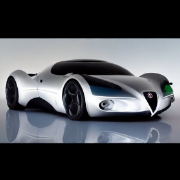Scelte strategiche gruppo Stellantis NV

⬇️⬇️⬇️ DISCUSSIONI SUI PROSSIMI MODELLI ⬇️⬇️⬇️
• Citröen
• Jeep
• Lancia
• Maserati
• Peugeot
⬇️⬇️⬇️ DISCUSSIONI SULLE PIATTAFORME ⬇️⬇️⬇️
Discussione sul titolo in borsa ➡️ CLICCA QUI!
Discussione su STLA Brain, SmartCockpit & AutoDrive ➡️ CLICCA QUI!
-
Contenuti simili
-
- 34 risposte
- 5874 visite
-
Stellantis - piattaforma STLA Medium 1 2 3 4 8
Pubblicato da Osv,
- stellantis tecnologia
- medium
- (e 5 altri in più)
- 72 risposte
- 20252 visite
-
Stellantis - Piattaforma STLA Frame
Pubblicato da __P,
- stla
- stellantis stla frame
- (e 2 altri in più)
- 9 risposte
- 814 visite
-
-
-







.thumb.jpg.902d2a4f20a129e92b6f6920407b81bd.jpg)












Messaggi Raccomandati:
Pubblicato da __P,
0 reazioni
Vai a questo messaggio
Crea un account o accedi per lasciare un commento
Devi essere iscritto per commentare e visualizzare le sezioni protette!
Crea un account
Iscriviti nella nostra community. È facile!
Registra un nuovo accountAccedi
Sei già registrato? Accedi qui.
Accedi Ora